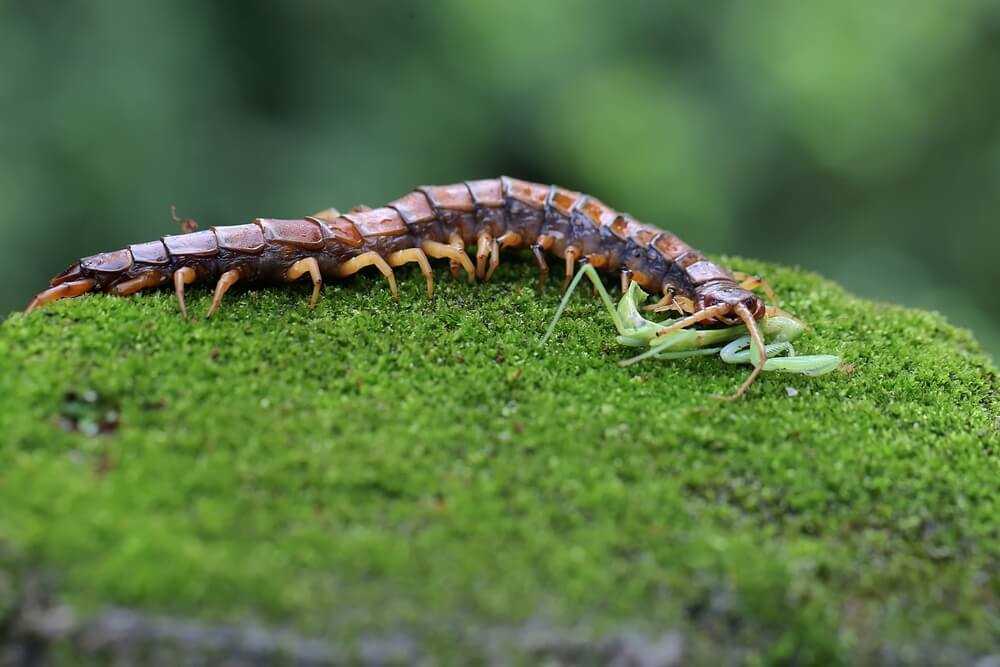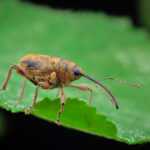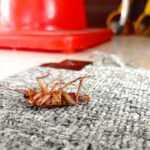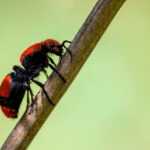Centipede Diet: What Do Centipedes Eat?
Centipedes consume a variety of invertebrates and small insects as part of their diet, preying on creatures such as ants, spiders, bed bugs, termites, and cockroaches. The role centipedes play is vital for keeping pest populations in check and contributing to ecological equilibrium. In this article, we will explore the particular prey items that centipedes eat, how they hunt them down, and the positive impact these predators have across different ecosystems.
Key Takeaways
- Centipedes are carnivorous predators that play a crucial role in pest control and maintaining ecological balance by preying on small insects and invertebrates.
- The diet of centipedes varies significantly by species, allowing them to adapt to different environments and ecological niches, with house centipedes particularly effective at managing indoor pest populations.
- Preventative measures, such as sealing entry points and reducing humidity, are essential for managing centipede presence in homes, along with natural pest control methods to minimize reliance on chemical treatments.
Centipede Feeding Habits
Centipedes, as carnivorous arthropods, stand out as efficient predators within the realm of insects. They primarily feed on small insects and a range of other invertebrates, demonstrating their crucial function in sustaining ecological equilibrium. By consuming small invertebrate pests, centipedes play an invaluable role in pest management across natural and human-altered settings.
Featuring a wide array of prey items in their diet reflects the centipede’s capacity to adapt and excel as a predator. They actively pursue various targets from common household nuisances to garden-dwelling insects with remarkable speed and deadly venomous fangs designed for capturing and incapacitating their prey.
Understanding what centipedes consume sheds light on their significant contribution to pest control efforts and maintaining ecological harmony. This knowledge also provides perspective into how these organisms flourish across diverse habitats such as moist cellars or verdant outdoor spaces.
Common Prey
Before, centipedes ate a wide array of prey, including spiders, ants, bed bugs, cockroaches, and termites. This diverse diet makes them effective predators of household pests, helping to keep your home free from these unwanted guests. House centipedes, in particular, are known for targeting common indoor pests like spiders, bed bugs, and termites, making them a natural form of pest control.
After that, centipedes eat a wide array of prey, including:
- spiders
- ants
- bed bugs
- cockroaches
- termites
This diverse diet makes them effective predators of household pests, helping to keep your home free from these unwanted guests. House centipedes, in particular, are known for targeting common indoor pests, making them a natural form of pest control.
In addition to household pests, centipedes also prey on other small arthropods and other insects found in their environment. Their varied diet underscores their adaptability and effectiveness as predators, thereby managing pest populations and contributing to the ecosystem’s overall health.
Hunting Techniques
Armed with distinctive hunting skills, centipedes excel as predators. Their rapid movement and nimbleness enable them to pursue potential prey swiftly, often ambushing them unexpectedly. On locating their target, centipedes deploy venomous fangs to paralyze the prey promptly, effectively preventing any chance of escape.
Thanks to this deadly blend of agility and venom potency, centipedes are proficient in capturing a vast range of prey items that include tiny insects as well as sizeable arthropods. These adept techniques underscore their evolutionary advancement and contribute to their proliferation across various habitats.
Dietary Variations by Species
Centipede species exhibit a diverse range of dietary preferences that are influenced by their size, the type of species they belong to, and the prey available in their surroundings. Certain centipedes might have a predilection for particular kinds of food sources. Conversely, some display more eclectic feeding habits. Such diversity in diet assists various centipede species in settling into distinct ecological roles while minimizing direct competition over nutrition.
Smaller varieties tend to consume insects and assorted small invertebrates as part of their diet. Meanwhile, larger types of centipedes may hunt down amphibians or even small mammals. This showcases how adaptable centipedes are when it comes to securing sustenance across different environments where they establish themselves.
House Centipedes’ Diet
House centipedes serve as natural enforcers of pest control in domestic environments. They feed on a multitude of indoor pests, which include insects like silverfish and firebrats, along with carpet beetle larvae, cockroaches, and spiders. By hunting these live bugs and small invertebrates, house centipedes play an instrumental role in managing the population of these pests to foster a more salubrious home setting.
The existence of house centipedes within your living space can often indicate a larger issue with pests since they are drawn into houses by the plentiful prey that is present. Recognizing what constitutes their diet allows homeowners to understand the advantageous aspect of cohabitating with these arthropods despite their off-putting looks.
By keeping indoor pest populations under control naturally, house centipediles help diminish reliance on chemical treatments for pest management—supporting both household health and environmental sustainability.
Indoor Prey
House centipedes typically feed on a diverse range of small insects and arthropods that inhabit indoor spaces. Carpet beetle larvae, silverfish, as well as other diminutive arthropods common in household settings are among their usual prey. As they naturally hunt these undesirable critters, their diet lends itself to managing pest infestations inside houses.
Regular encounters with house centipedes may signal the presence of additional pest troubles since these centipedes gravitate towards homes where there is an abundance of food sources. Such occurrences imply a deeper problem that requires attention.
Benefits of House Centipedes
Although house centipedes might have a disturbing look, they provide significant advantages as predators of destructive insects. By managing pest numbers within the home, they help to limit the reliance on chemical interventions and contribute to preserving a more wholesome living space.
In garden ecosystems too, these centipedes play an important role by helping in the control of pests. Their activity supports plant vigor and minimizes dependency on chemical pesticides, proving their worth as beneficial partners both inside homes and outside in gardens.
Outdoor Centipedes’ Diet
Centipedes found outdoors are voracious carnivores, feasting on various insects and small invertebrates that inhabit their surroundings. By consuming spiders, worms, and other such arthropods as part of their diet, centipedes serve a crucial function in preserving the ecological equilibrium by keeping these smaller creature populations in check.
Reflecting the array of available prey within their environment, outdoor centipedes boast an eclectic diet. Their ability to adapt to different types of habitats allows them to flourish everywhere from dense forests to domestic gardens while aiding significantly in controlling pests.
Recognizing what outdoor centipedes eat underscores the importance they hold within ecosystems as predators. They play an indispensable role not only in regulating pest numbers but also fostering overall ecosystem health due to maintaining balance among arthropod communities.
Garden Prey
Centipedes in gardens are known to feed on a variety of soil-dwelling insects, larvae, worms, and slugs. Their diet is instrumental in controlling the population of pests that can harm plants, thereby playing a positive role in maintaining garden health.
When centipedes are found within a garden environment, it signifies an active ecosystem where natural pest control mechanisms are effectively functioning. These arthropods contribute to improving the overall health and yield of the garden by targeting and preying on undesirable insects and other pests residing in the soil.
Impact on Ecosystem
Centipedes are essential in maintaining the ecosystem’s equilibrium by regulating the numbers of small invertebrate populations. They exhibit predatory behavior that helps keep different species from overpowering others, which is imperative for preserving biodiversity and ensuring that ecological systems operate correctly.
By curbing pest populations, centipedes play a significant role in sustaining their environments. As predators, they help ensure that ecosystems stay well-balanced and robust, underlining the critical value of these frequently disregarded organisms.
Unique Predatory Behaviors
Some species of centipedes are distinguished by their exceptional predatory strategies, distinguishing them from other arthropods that serve as prey. Their versatility and proficiency in predation render them intriguing subjects for research.
Centipedes demonstrate diverse behaviors, including the pursuit of larger prey and exhibiting cannibalism, which underscores their prowess as effective predators.
Large Prey
Certain species of centipedes, notably the sizable Giant Sonoran Centipede (Scolopendra heros), have the ability to ambush and feed on substantial animals. These formidable predators seize small mammals and amphibians for sustenance, demonstrating their capacity for adaptation and predation when dealing with larger prey items.
The predatory behavior of the Giant Sonoran Centipede underscores its evolution in hunting more sizeable prey compared to its smaller counterparts. This trait signifies not only their unique position among centipede species, but also emphasizes their critical role in sustaining ecological equilibrium.
Cannibalism Among Centipedes
Various species of centipedes have exhibited cannibalistic tendencies, with bigger specimens preying on their smaller or wounded counterparts. Such behavior typically arises from the struggle for sustenance or dominance over an area, underscoring the fierce predatory disposition of these creatures.
The practice of cannibalism in centipedes reflects their capacity to adjust and persist, guaranteeing that the most robust members prosper. This not only bolsters individual health, but also reinforces the resilience of their populations.
Centipedes and Human Interaction
Centipedes, including house centipedes, are part of the arthropod family and are relatives of spiders and scorpions. They are not insects. These creatures usually inhabit dark, moist areas like underneath stones or within leaf debris. Their appearance in a house may cause discomfort. Familiarizing oneself with their diet and habits can assist in achieving peaceful cohabitation between humans and these as well as other types of centipedes.
To decrease the likelihood of centipedes taking up residence inside a home, it’s important to pinpoint how they’re getting in and address excessive moisture issues. Conducting routine household upkeep such as purging drains with solutions like vinegar or bleach can deter house centipedes from settling into humid spaces around your dwelling.
Why Centipedes Enter Homes
House centipedes often infiltrate homes as they seek refuge or pursue various smaller pests found within households. These arthropods are particularly drawn to environments offering nourishment, humidity, and concealment. As a result, moist spaces such as basements, bathrooms, and closets become ideal habitats for them.
Should you regularly encounter house centipedes inside your living space, it may indicate a significant pest problem that warrants immediate attention. The frequent appearance of these creatures implies the existence of plentiful food sources for them—this could be signaling an unseen infestation by other pests that requires intervention.
Are Centipedes Dangerous?
Despite the fact that centipedes possess pincers and are capable of biting, their bites tend to be non-critical and seldom lead to any grave health complications. It is critical to assess the actual threat they present as humans often view them as perilous due to their venom-bearing bites. While a bite from a centipede may result in some discomfort, it’s rare for an individual to have an allergic reaction. Hence they represent minimal danger for most people.
Understanding the true hazard posed by centipedes can aid in addressing their existence without undue alarm. Although experiencing a bite from one can cause pain, such incidents do not pose fatal risks. When considering pest control advantages provided by centipedes, these benefits frequently surpass associated concerns.
Pest Control Strategies
Effective methods for managing centipede populations include:
- Improving cleanliness
- Sealing entry points
- Altering the environment to make it less habitable for pests
- Employing chemical remedies
When addressing current infestations, consider using chemicals such as baits, aerosols and powders only as a final measure. Deploy traps designed to attract and imprison centipedes can aid in reducing their numbers inside.
Natural strategies for eliminating centipedes encompass applying diatomaceous earth that disrupts their outer shell causing them to dehydrate. A strong vacuum cleaner can be used with success to capture and remove centipedes from domestic areas.
Enlisting the services of a professional pest control company could provide thorough eradication along with ongoing protective measures against future invasions by centipedes.
Preventative Measures
To keep centipedes from invading your house, you should implement a number of important measures. By closing any openings or cracks on the outside of your house, such as those near windows and doors, you can stop centipedes from entering. Operating a dehumidifier when it’s warm can lower indoor humidity levels that attract house centipedes.
Maintaining cleanliness in outdoor spaces by clearing away rubbish and cutting back plants will help discourage these pests. Consistently cleaning moist zones close to the house base and ensuring that inside areas are dry with adequate airflow also diminishes chances for centipede invasion.
Effective Treatments
To address the presence of house centipedes, several proven strategies can be utilized. Utilizing diatomaceous earth or boric acid is an effective approach as these substances erode the protective exoskeletons of centipedes and ultimately cause them to become dehydrated. For optimal pest control effectiveness, these materials should be dispersed in areas with gaps such as those found within concrete slabs and block walls.
In situations where a substantial infestation occurs, it’s wise to seek assistance from a professional in pest management. These experts have access to potent insecticides that include emulsifiable concentrates, wettable powders, and dust formulations infused with either boric acid or diatomaceous earth designed for comprehensive eradication efforts.
By predating on other household pests naturally occurring within your home environment, house centipedes contribute towards reducing reliance on chemical-based methods of pest control.
Summary
Understanding the dietary preferences and behavioral patterns of centipedes highlights their important function as natural controllers of pests, both inside homes and in outdoor settings. These predatory arthropods feed on a broad variety of small insects and other invertebrates, playing an essential role in controlling pest numbers and maintaining ecological harmony. Specifically, house centipedes aid in curbing the presence of typical household pests, while their counterparts outside contribute significantly to garden ecosystem health.
Although they may seem daunting at first glance, the advantages provided by centipedes surpass any potential threats they present to humans. Homeowners can regulate the number of these creatures through proper preventative methods alongside effective remedial actions, thereby recognizing their contribution to a healthy living space. Welcoming these intriguing organisms promotes a more harmonious and environmentally friendly method for managing pests.
Frequently Asked Questions
What do centipedes eat?
Centipedes primarily eat small insects and other invertebrates such as spiders, ants, bed bugs, cockroaches, and termites. Their diet mainly consists of these creatures, making them effective predators in their ecosystems.
Why do centipedes enter homes?
Primarily driven by the quest for sustenance, moisture, and refuge, centipedes typically infiltrate residences favoring humid spots such as basements and bathrooms.
The existence of centipedes in a home suggests that it offers an environment conducive to their survival.
Are centipedes dangerous to humans?
Centipedes are generally not dangerous to humans; their venomous bites may cause discomfort but serious health issues are rare. It is important to take caution, but most encounters do not pose a significant threat.
How can I prevent centipedes from entering my home?
To prevent centipedes from entering your home, seal cracks and crevices on the exterior, utilize a dehumidifier to minimize moisture, and keep the outdoor area tidy and free of debris.
What are effective treatments for centipede infestations?
Effective treatments for centipede infestations involve using boric acid and diatomaceous earth, applying insecticides to cracks and crevices, and considering professional pest control services for more severe cases.
"*" indicates required fields
"*" indicates required fields




